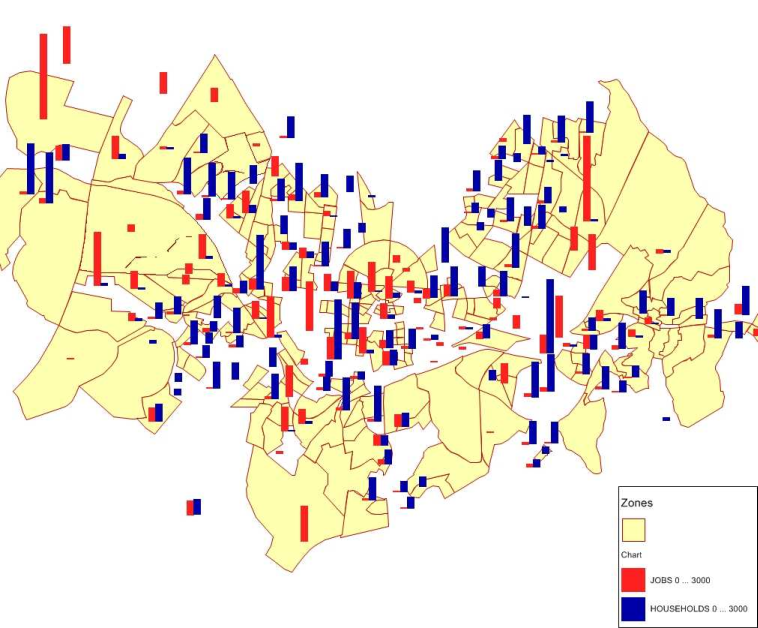For all network objects - just as in databases or other geographic information systems - you can define your own attributes in addition to the default input and output attributes in Visum. User-defined attributes can be edited and stored just like predefined Visum attributes.
The following data can thus be included in the model.
- Structural data of traffic zones (such as the number of households or the number of workplaces), which serve as input data for demand modeling.

Image 36: Structural data of zones stored in user-defined attributes
- Count data of links over several years (e.g. DTV2005, DTV2006)

Image 37: Count data stored in user-defined link attributes
- Different categories of vehicle journeys
- User-defined attributes for storing calculation results from Multi-Edit operations (User Manual: Editing attribute values of network objects). The Table 26 shows an example in which the line costs per kilometer of the link length are calculated with the aid of a formula and the result is saved in the user-defined attribute Cost_per_Km.
|
Note: Use formula attributes if you want the attribute Cost_per_Km to be updated automatically when costs or link lengths change (Formula attributes). Then you need not repeat the calculation procedure in order to update the attribute. Visum will automatically calculate the current values for you. |
Each user-defined attribute has one data type. The following data types can be selected.
- Bool (for example for a user-defined attribute "in scenario active", which can only be 0 or 1)
- File (for example for a user-defined attribute at count locations which specifies which file contains further information on the count location)
- Surface
- Integer
- Precise duration
- Speed
- Number with decimal places
- Length (kilometers/miles)
- Length (meter/foot)
- Long text
- Length
- Text
- Currency
- Time period
- Time (for example 06:32:45)
User-defined attributes can optionally be defined with a specification for time intervals. The user-defined time interval sets are available for selection as subattributes. This allows you, for example, to enter count data as hourly values.
Select Formula attribute to calculate attributes via a formula. The attribute values are then automatically kept up-to-date (Formula attributes)

